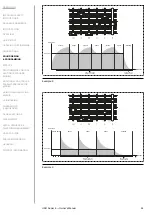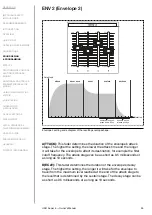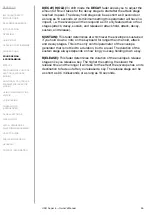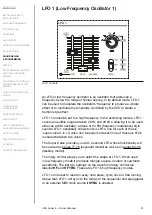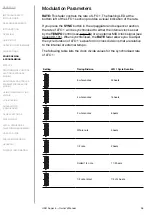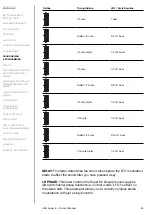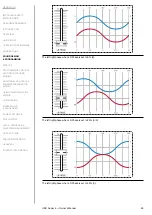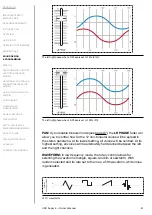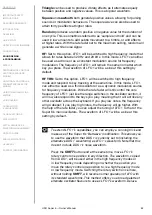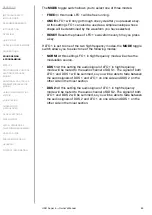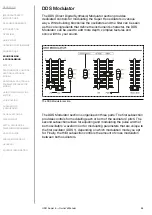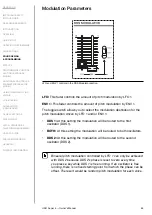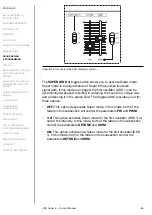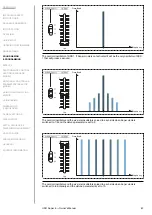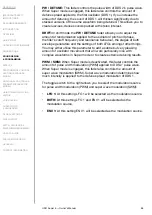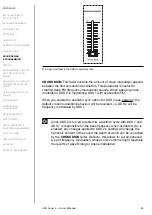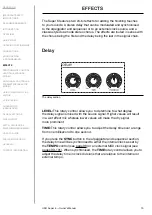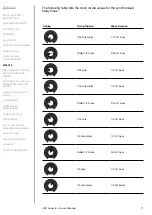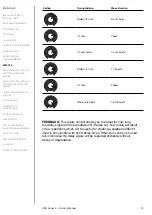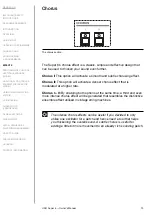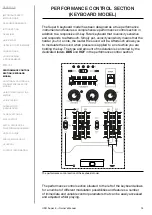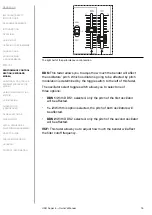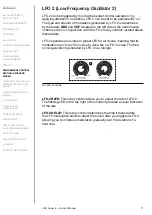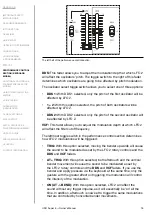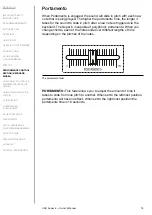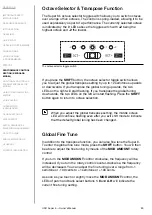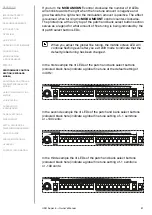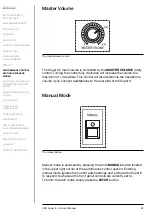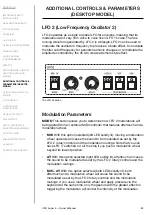
UDO Super 6 — Owner’s Manual
68
PW / DETUNE:
This fader controls the pulse width of DDS 2’s pulse wave.
When Super mode is engaged, this fader also controls the amount of
detune spread applied to the first oscillator (DDS 1). If you increase the
amount of detuning, the sound of DDS 1 will thicken significantly due to
stacked versions of the same waveform being detuned. This allows you to
create luscious, dense sounds packed with stereo interest.
DRIFT:
In shift mode the
PW / DETUNE
fader allows you to adjust the
amount of randomisation applied to the oscillators’ pitch and phase,
the filter’s cutoff frequency and resonance behaviour, the stages of both
envelope generators and the settings of both LFOs amongst other things.
You may either utilise this parameter to add a subtle but very pleasing
amount of oscillator movement that will work particularly nice with
complex waveforms in Super mode or to create extreme detuning results.
PWM / SWM:
When Super mode is deactivated, this fader controls the
amount of pulse width modulation (PWM) applied to DDS 2’ pulse wave.
When Super mode is engaged, this fader also controls the amount of
super wave modulation (SWM). Super wave modulation determines how
much intensity is applied to the detune spread modulation of DDS 1.
The toggle switch to the right allows you to select the modulation source
for pulse width modulation (PWM) and super wave modulation (SWM):
• LFO 1:
At this setting LFO 1 will be selected as the modulation source.
• BOTH:
At this setting LFO 1 and ENV 1 will be selected as the
modulation source.
• ENV 1:
At this setting ENV 1 will be selected as the modulation source.
Summary of Contents for SUPER 6
Page 142: ......

